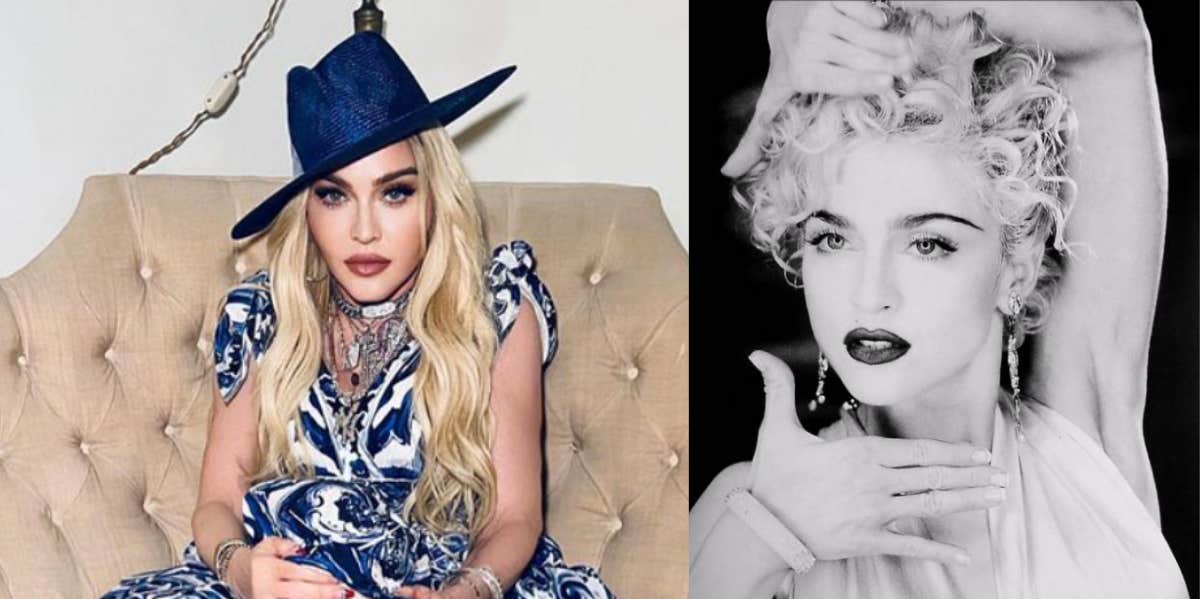Madonna Didn't Invent Voguing, But You Should Know The People Who Did
They belonged to a community that was pushed aside.
 Instagram / YouTube
Instagram / YouTube Madonna has created a conundrum for herself, by claiming that she was the reason that female artists today are able to express themselves sexually.
In an Instagram story, she claimed that she paved the way for women like Cardi B, Miley Cyrus, and Kim Kardashian.
It began by describing a book that she published 30 years ago called S.E.X. She “also wrote about [her] sexual fantasies”.
“I spent the next few years being interviewed by narrow minded people,” said the singer. “who tried to shame me for empowering myself as a Woman”.
The “Material Girl” singer continued with, “Now Cardi B can sing about her WAP. Kim Kardashian can grace the cover of any magazine with her naked ass and Miley Cyrus can come in like a wrecking ball. You’re welcome b–hes."
While Madonna and Cardi B have quashed the feud that ensued after the singer's statement, her claims point to a controversial history of the star getting credit for what has not always been hers.
Madonna has been criticized for claiming voguing as her own.
In the height of her fame, Madonna became synonymous with the unique dance trend.
The dance now known as voguing, originated from model poses in the magazine of the same name.
The ballroom scene was a space for gay and trans Black and Latinx folks who were excluded from the wider gay scene. Even within the LGBTQIA+ community, there is a hierarchy of who gets to represent this group. Most of the times, this looked like a cisgender white gay male.
According to Vogue, “between the 1960s and 1980s, the city’s drag competitions had transformed from pageantry-style balls to voguing battles.”
Each contestant represented a House, which was led by “Mothers” and “Fathers.”
Madonna was considered to be at the forefront of a movement pioneered by marginalized communities. She benefitted materially while the folks in the communities struggled to make ends meet.
People who were a part of this community turned to the balls in a society that considered them to be worthless. This is why the ballroom scene is so sacred. It is not just about dancing, but about liberation and family.
By forming houses, they inherently challenged what it meant to be a family. And that didn’t have to include blood ties. As a cisgender white woman, Madonna had the privilege to bring vouging and ballroom to the mainstream.
RELATED: 5 Details About The Lady Gaga/Madonna Feud — Including How It May Have Ended At The Oscars
In this, I mean that if a Black gay man had come onto the scene with the same dances during that time, he would not have gained the same popularity.
Madonna specifically being a woman and being white were the two main ingredients that allowed her to profit off of voguing.
Billy Porter, one of the stars of the series “Pose”, told the Guardian that many mainstream artists do the exact same thing as Madonna when it comes to the LGBTQIA+ community. ““we are a culture that you r–pe from and get rich from but literally close the door to,”
He continued by saying, “Without us, Madonna would be nothing, Beyoncé would be nothing, Lady Gaga would be nothing,”
Madonna’s influence is not up for debate, but she needs to recognize the influences that she was inspired by as well.
Madonna’s “Vogue” included images that we have seen from contemporary television shows like “Pose” and documentaries such as “Paris is Burning”.
The video itself was choreographed by and featured Jose Gutierez Xtravaganza and Luis Xtravaganza, of the House of Extravaganza.
Knowing the origins of voguing makes it difficult to understand why Madonna was insistent on centering herself in a narrative where she is privileged as a white woman.
Voguing was a way of throwing shade in dance form. Each dancer talked to each other in their moves, mimicking the different ways models would pose and style. It was a form of communication and a way to express oneself.
Though accusations of appropriation are rampant, there are some ways that she has used her privilege to help the communities whose culture she benefited from.
She chose to speak out about AIDS when it could’ve ruined her career, at the height of the Reagon administration and his bigotted theories on “gay plauge”
In 2019, Madonna received the Advocate for Change Award from GLAAD. She was honored for her activism during the AIDS crisis and gave an emotional speech detailing her reasons for fighting for LGBTQIA+ equality.
Taylor Haynes is a writer based in Chicago. She writes for Entertainment & News at YourTango. You can find her on Instagram here.

